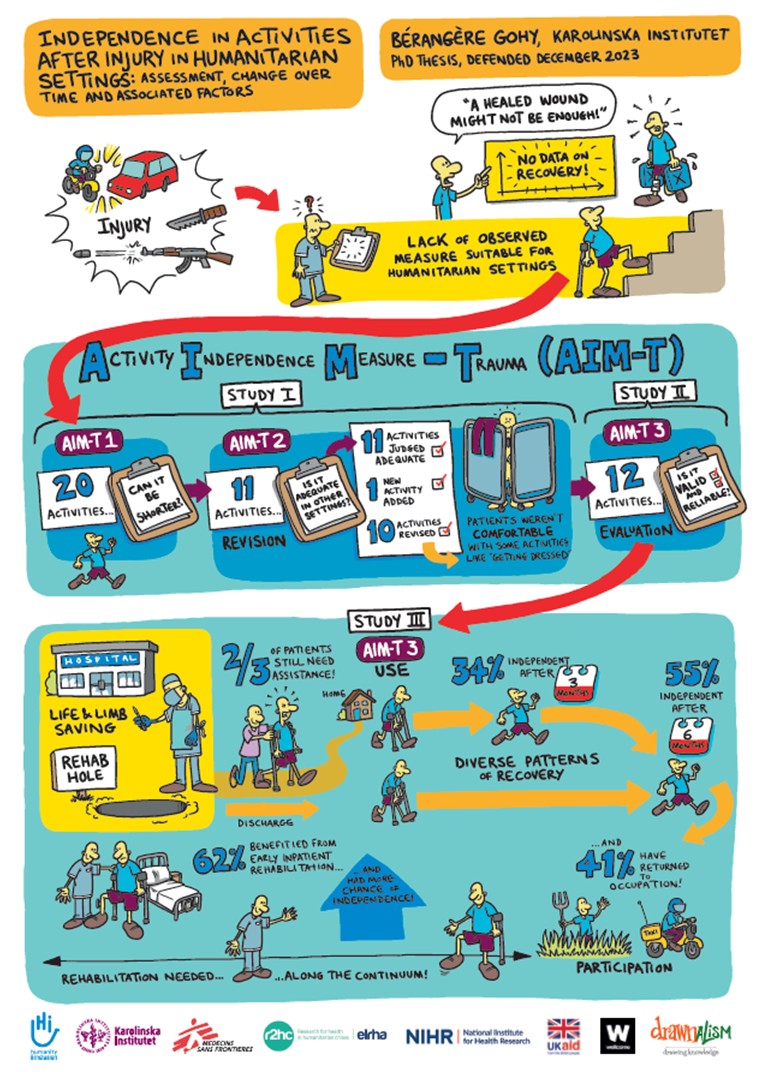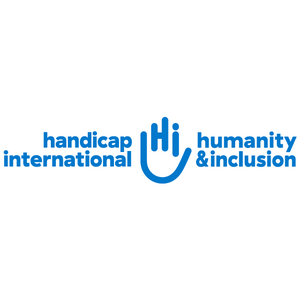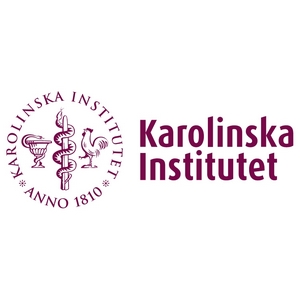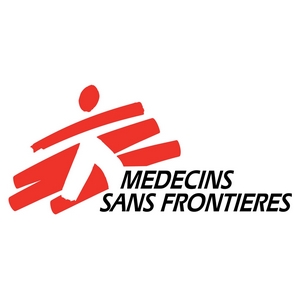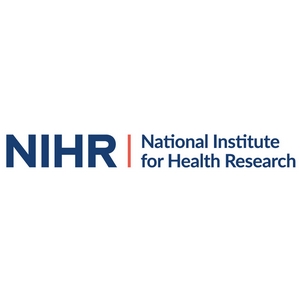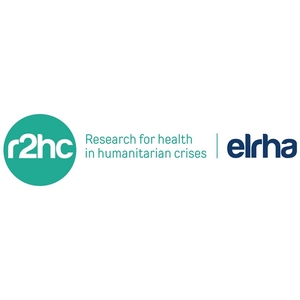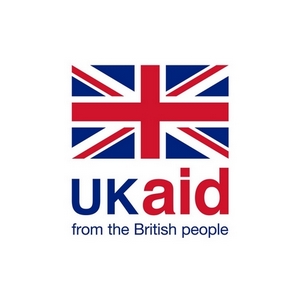Recovery of functioning after injury in humanitarian settings
From 2018 to 2024, an operational research project was implemented by HI, in partnership with Médecins Sans Frontières (MSF) and the medical university Karolinska Institutet (KI) as part of a PhD thesis. This project aimed at assessing the recovery of patients during the first six months after their injury, across different humanitarian settings.

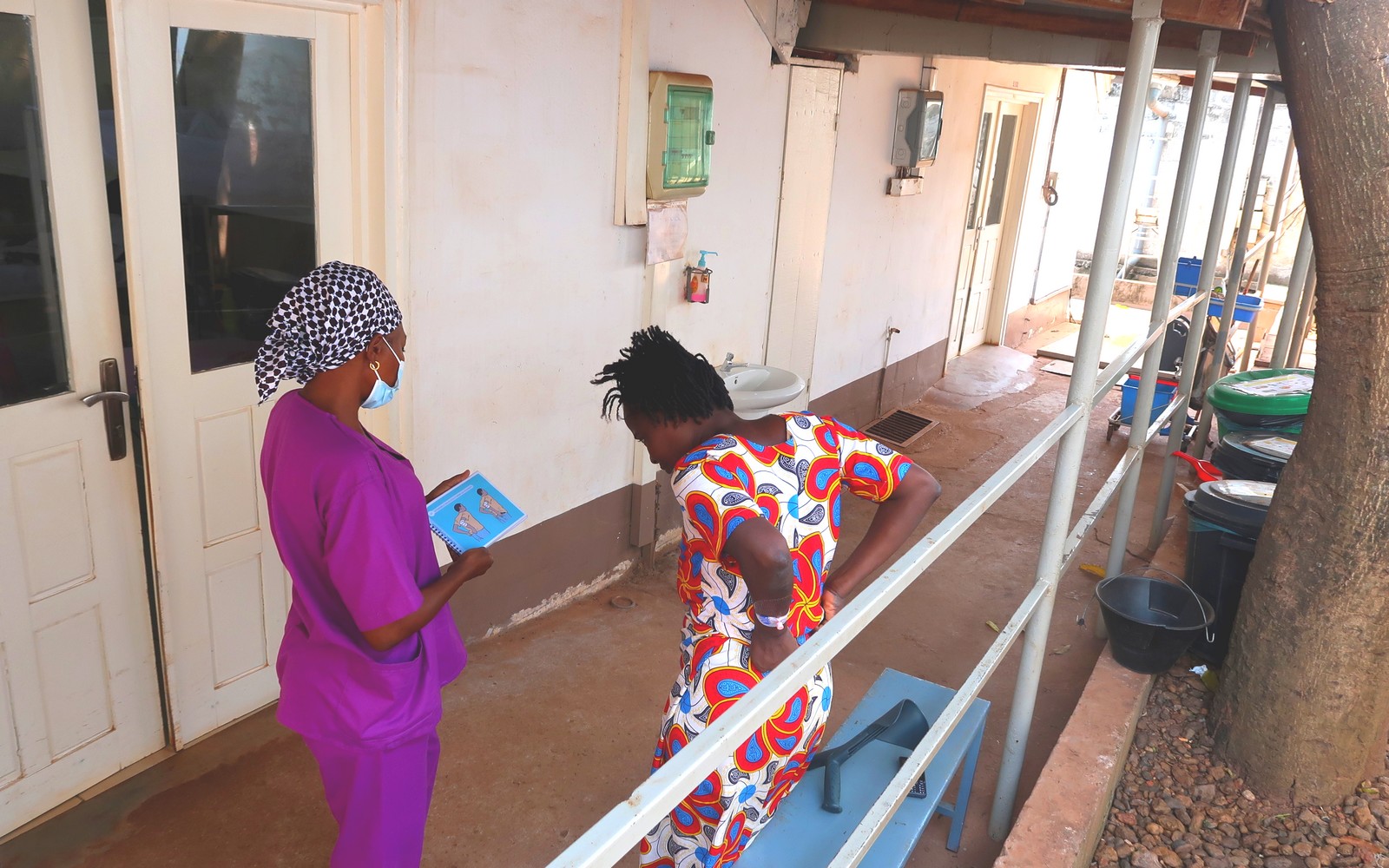


© B. Gohy / HI
Trauma care in humanitarian settings usually focuses on saving life and limbs, and rarely on how patients are living their daily life after injury. However, patients in humanitarian settings have a vital need to recover, beyond mortality and morbidity.
While rehabilitation aims at the recovery of functioning, and is recommended within trauma care from early stage, early rehabilitation is still often not systematically implemented in humanitarian settings. Moreover, patients and their caretakers might not always be aware of the importance of early rehabilitation, nor be comfortable to be provided such early provision. The scarce evidence on benefit of early rehabilitation in such settings further hinders its prioritization within trauma care.
In addition, there is a lack of adequate measures to assess recovery of functioning in humanitarian settings. Indeed, the existing measures of functioning often present shortcomings in humanitarian settings, such as their length, cultural relevance and appropriateness.
Picture: Family 79, Cote d'Ivoire - © Zoriah Miller / Dollar Street
What is the AIM-T?
To address this lack of adequate measure, the Activity Independence Measure - Trauma (AIM-T) was developed as a practical tool allowing healthcare professionals to evaluate independence of a patient after injury, in key daily life activities. The AIM-T is rooted in a strong determination to adopt a patient-centered-approach and is based on observed items, to encourage early mobilization of the patients after injury.
It was developed in 2011 by Médecins Sans Frontières - Doctors Without Borders (MSF) and Handicap International - Humanity & Inclusion (HI) in a trauma center in Afghanistan, and used since then in the two organisations' different projects. However, no evaluation on its validity and reliability had been performed.
Summary and cartoon
To sum up, this research project was an operational research project, based on gaps identified in different humanitarian settings, including:
- the lack of adequate measure of functioning, valid and reliable in humanitarian settings;
- the strong focus of life and limb saving, with few emphasize on outcomes beyond mortality, and thereby under-prioritization of rehabilitation.
The research project at a glance, through this cartoon.
STORY
Encouraging patients after trauma in humanitarian settings to get moving again
This first blog describes how this research project all started, through the story of one boy who got injured in Afghanistan and did not start moving early.
Methodology
This project was implemented in two phases, more specifically aiming at:
- revising and evaluating a measure of independence in activities, the Activity Independence Measure-Trauma (AIM-T) (Phase 1);
- assessing recovery of functioning among patients after acute orthopedic, visceral and/or skin injury, and its associated factors, including early rehabilitation (Phase 2).
Three cross-sectional studies were implemented stepwise, based on COSMIN framework (Consensus-based standards for the selection of health measurement instruments), and across six humanitarian settings located in different regions: Burundi, Cameroon, Central African Republic (CAR), Haiti, Irak and Yemen, between August 2017 and November 2019.
- The AIM-T was first shortened, based on inter-item redundancy, using routine data of 635 patients.
- The shortened AIM-T was then revised based on feedbacks from 20 health care professionals and 63 patients on its adequacy (i.e., relevance, comprehensiveness, feasibility, clarity and appropriateness), using semi-structured individual interviews.
- Finally, the revised AIM-T was evaluated across 195 patients in terms of construct validity and reliability.
A prospective multicentric longitudinal study was implemented in four hospitals, supported or run by MSF in Burundi, Cameroon, Central African Republic (CAR), Haiti, between June 2020 and January 2022.
Data was collected at hospital admission, hospital discharge, three months and six months after acute orthopedic, visceral and/or skin injury, across 554 patients.
- Changes in different aspects of recovery of functioning were assessed over time.
- Factors associated with independence at discharge, three months and six months were identified, using multivariable logistic regression models.
Key findings
This research project allowed altogether to:
- have a measure of independence (i.e, the AIM-T) judged adequate across different humanitarian settings, and with supported validity and reliability with patients after injury;
- highlight the difficulties experienced by patients after injury across diverse aspects of functioning, and to identify factors associated with recovery, including early physiotherapy.
Phase 1: AIM-T revision and evaluation
- The AIM-T is shortened (from 20 to 12 items).
- The AIM-T is an adequate reflection of independence in activities, i.e. all items were judged relevant, comprehensive, feasible, clear and appropriate.
- The AIM-T is a valid and reliable measure to assess the level of independence amongst patients after injury.
The Phase 1 research findings were presented in two scientific articles published in a peer-reviewed journal:
1st article: AIM-T Monitoring independence in daily life activities after trauma in humanitarian settings item reduction and content validity - The first article focuses on the AIM-T development and revision in the different countries: Haiti, Iraq, Yemen and Burundi.
2nd article: Assessing independence in mobility activities in trauma care: validity and reliability of the activity independence measure-trauma (AIM-T) in humanitarian settings - The second article focuses on the AIM-T validity and reliability evaluation in Burundi, Cameroun, Iraq and Central African Republic.
Snapshot: Measuring independence after injury. A study across different humanitarian settings - This two-page document gives an overview of the phase 1 methodology, findings and implications.
Phase 2: Longitudinal recovery of functioning
Patients gradually recovered functioning over the first six months after injury.
- At hospital discharge:
> Most patients still dependent and in pain. - At six months after injury:
> Difficulties across aspects of functioning were still observed or reported in the majority of patients; patients with external fixation experienced a particularly prolonged recovery. - Throughout: domestic, professional and social roles were valued by patients, in their recovery process.
Age, type and location of injury, baseline independence and trauma care interventions were associated with recovery of independence at one or several timepoints.
- Patients receiving early physiotherapy (i.e., within 48 hours of admission) were more likely to be independent at hospital discharge and after three months.
A third article on the results of phase 2 of the research will be published shortly.
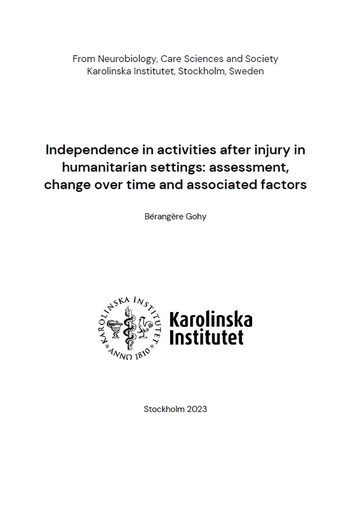



PhD thesis
This research project was undertaken as part of a PhD thesis at Karolinska Institutet. In the thesis, the three studies are presented in their context and the key findings are discussed.
Patients after injury and caretakers
The research findings may contribute to improved patients’ outcomes after injury, through:
- Increased opportunities for early mobilization
- Promotion of person-centered approach
- Increased awareness on the importance of early physical and functional rehabilitation
To support the uptake of the research findings on the awareness, specific materials have been designed:
Flipchart
As an alternative method to the video, this flipchart carries the same key messages on the importance of early physiotherapy after injury.
The flipchart will initially be available in English only.
Healthcare professionals
The research findings may contribute to improved healthcare professionals’ practices, as part of trauma care, through:
- Contribution to a comprehensive assessment, including data on the independence in activities
- Promotion of person-centered approach
- Support to clinical reasoning and decision-making (e.g. discharge planning; prioritization)
"I use the AIM-T on a daily basis, and I find it good in alleviating the suffering of patients with wounds and fractures, thanks to its unique design."
Physiotherapist, Iraq
To ensure quality of data, healthcare professionals must be trained on the AIM-T use and practical applications.
Several training materials have been produced for healthcare professionals:
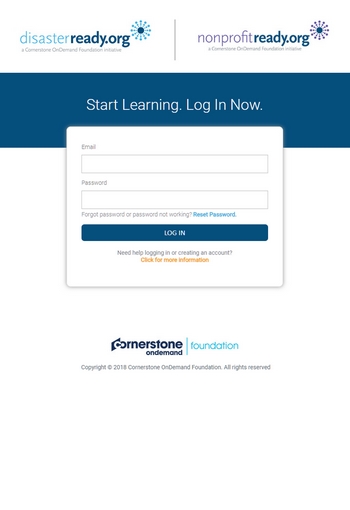



E-learning
This training aims to present the AIM-T, the constituting 12 activities and the scoring system, as well as provide concrete examples of its applications in daily practice. It targets professionals so that they can use the AIM-T properly and apply it to their practice. Available in English, French and Arabic.
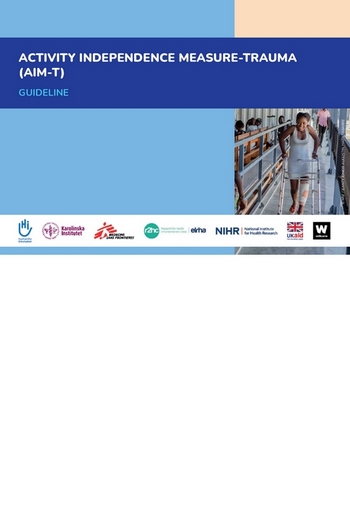



AIM-T guideline
This guideline presents the main principles driving the AIM-T, and provides detailed information on the 12 activities, the scoring system and necessary equipment - It helps professionals and leads them in using the AIM-T tool. Available in English and French, soon in Arabic.
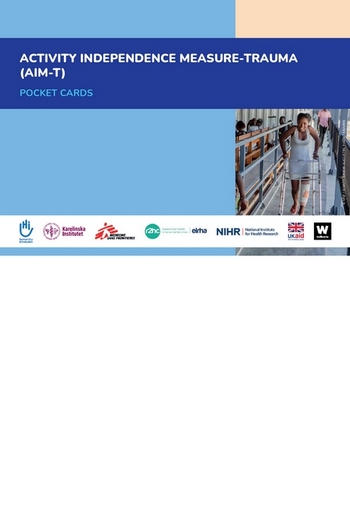



Pockets Cards
The pocket cards are based on the guideline, developed for bed-side use by healthcare professionals. For each of the 12 activities, it includes an illustration and summarizes key messages. Available in English and French, soon in Arabic.
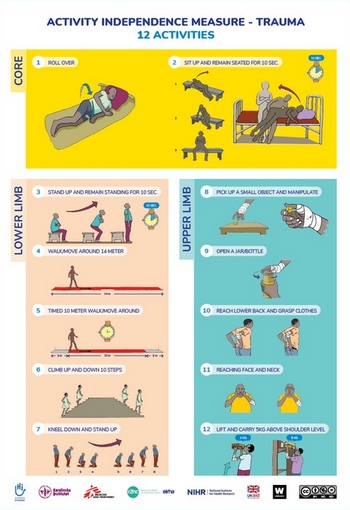



Poster – 12 activities
This poster illustrates the 12 activities, organised in three subscales. Available in English and French, soon in Arabic.
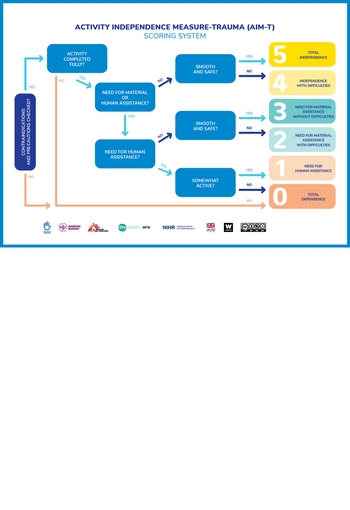



Poster – Scoring system
This poster presents the scoring system in a flowchart. Available in English and French, soon in Arabic.
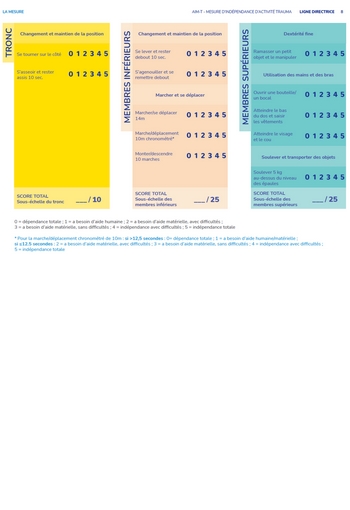



Patient score sheet
Here is the sheet to use the AIM-T with patients. Available in English and French, soon in Arabic.
Health/Rehabilitation service managers
The research findings may contribute to improved trauma care monitoring and improved quality of trauma care through:
- Use of a quality of trauma care indicator focusing on recovery, thus beyond mortality and morbidity
- Benchmarking of recovery of functioning after injury in humanitarian settings
- Promotion of an early integration of rehabilitation, and its provision along the continuum of care
"Using these research findings, the trauma care team needs to get together to improve our patients’ mobility. The measure of recovery (i.e., the AIM-T) should be one of our indicators to monitor this."
Hospital director, Cameroon
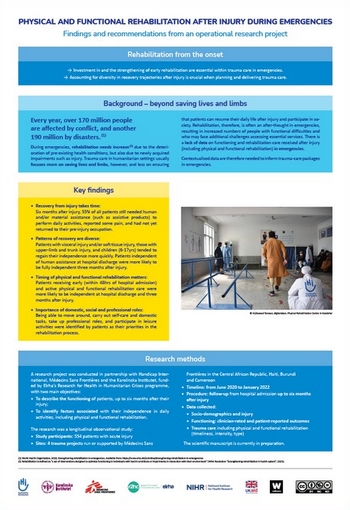



Advocacy note
Physical and functional rehabilitation after injury during emergencies. Findings and recommendations from an operational research project
The document gives key generic advocacy messages on early rehabilitation after injury in humanitarian settings, based on Phase 2 findings. Available in English and in French.
Acknowledgements - Stakeholders
We would like to thank all the study participants, the local teams, the coordination and headquarters teams at Médecins Sans Frontières and Handicap International - Humanity & Inclusion, as well as the physiotherapy and global public health departments at Karolinska Institutet.
This research project was funded by Elrha’s Research for Health in Humanitarian Crisis (R2HC) programme. R2HC aims to improve health outcomes for people affected by crises by strengthening the evidence base for public health interventions. The R2HC programme is funded by the UK Foreign, Commonwealth and Development Office (FCDO), Wellcome and the UK National Institute for Health Research (NIHR).
Photos: © B. Gohy / HI and © Zoriah Miller / Dollar Street - Comics/drawings: © DrawnAlism - Video: © Hikmat Kharoti - Guidelines: © Carla De Oliveira, © Didier Kassaï, © Alexandra Dunay-Vanhoutte and © Francesca Warren
For more information about this project and our approach.
Bérangère GOHY
Emergency Rehabilitation Specialist, Research Officer

